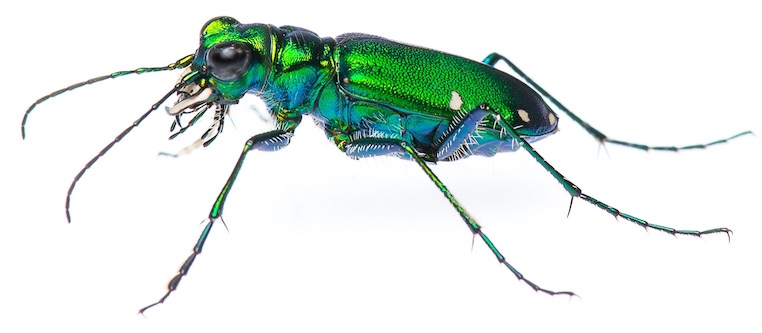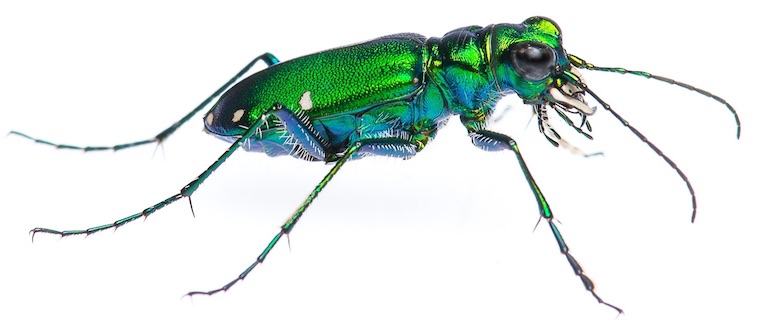Taxonomy
Family: CARABIDAE
Subfamily: CicindelinaeSubgenus: CylinderaSynonym: Cicindela unipunctata Comments: One of four species in this genus and the sole American representative (Pearson et al., 2015). Previously placed in Cicindela and then Cylindera but moved to Apterodela by Pearson et al. (2015) based on its large size, other morphological features, and DNA analysis.Species Status: No subspecies have been described (Pearson et al., 2015)
Identification
Distribution in North Carolina
County Map: Clicking on a county returns the records for the species in that county.
Flight Dates: Click on graph to enlarge
Habitats and Life History
Habitats: Unlike most of our Tiger Beetles, which prefer open sunny habitats, A. unipunctata inhabits closed canopy hardwood forests, where it forages in the leaf litter. We have records from both dry ridgetop forests and from mesic slopes and floodplain ridges, and from both hardwood forest and pine barrens. This is one of our most shade-tolerant species and it sometimes forages under the leaf litter. Most observations, however, come from along trails & forest openings where it is more likely to be seen. Diet: Predacious, presumably feeding on a wide variety of small insects and other arthropodsObservation Methods: This species is extremely well camouflaged, its umber coloration blending in with shaded hardwood leaf litter. It is also usually solitary and less prone to make sudden runs or flights, often staying motionless for lengthy periods (Knisley and Schultz, 1997). Additionally, it may be at least partially crepuscular; at least one of our records came from shortly after dark while sampling moths along a bait trail. Finding this species is, thus, largely a matter of luck.Abundance/Frequency: Usually seen as single individuals; its secretive behavior may result in it being undersampledAdult Phenology:
Status in North Carolina
Natural Heritage Program Status: Natural Heritage Program Ranks: G4G5 S3S4 State Protection: As with other North Carolina insects, no state laws provide them any protection. Permits must be obtained, however, to collect them in State Parks and other nature preservesComments: Although we have relatively few records for this species, that may be due to the difficulty in finding them. It is otherwise widespread across the state and occupies common and still extensive types of habitat. While there is more to be learned about its distribution, abundance, habitat associations and population trends, it will probably turn out to be secure within the state.
Photo Gallery for Apterodela unipunctata - One-spotted Tiger Beetle Recorded by: Brian Bockhahn Recorded by: Brian Bockhahn Recorded by: Pete Dixon Recorded by: T. Nergart Recorded by: Bio-Blitz Participants Recorded by: Steve Hall Recorded by: Dorothy E. Pugh

 »
»
 »
»